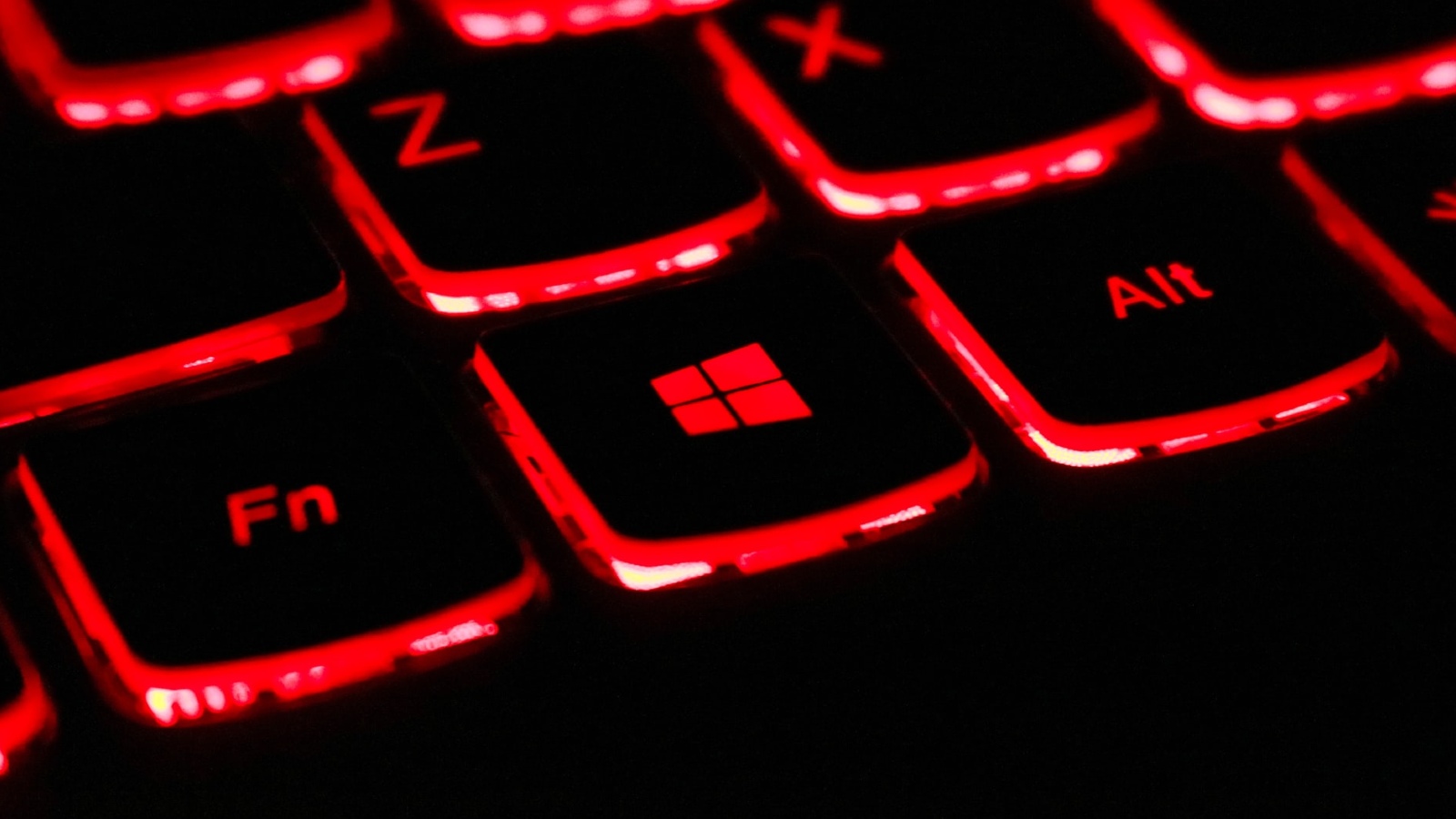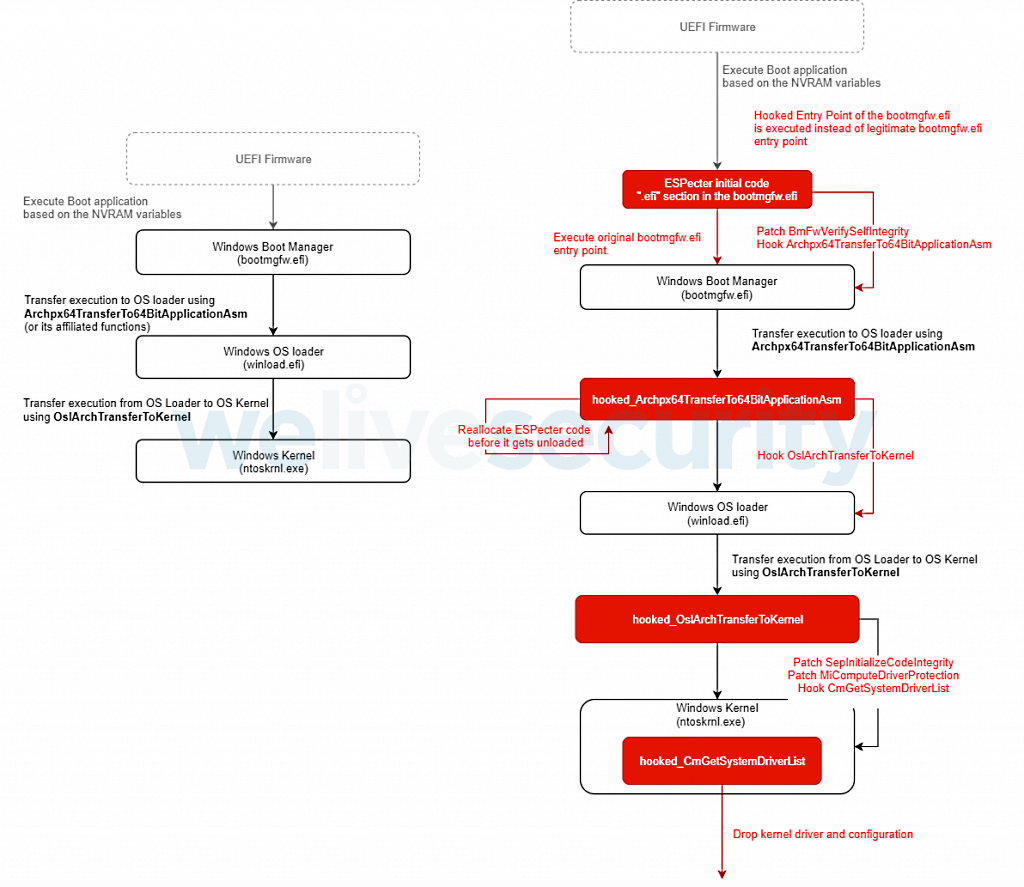
Image: Jeff Hardi
A newly discovered and previously undocumented UEFI (Unified Extensible Firmware Interface) bootkit has been used by attackers to backdoor Windows systems by hijacking the Windows Boot Manager since 2012.
Bootkits are malicious code planted in the firmware (sometimes targeting UEFI) invisible to security software that runs within the operating system since the malware is designed to load before everything else, in the initial stage of the booting sequence.
They provide threat actors with persistence and control over an operating systems' boot process, making it possible to sabotage OS defenses bypassing the Secure Boot mechanism if the system boot security mode is not properly configured. Enabling 'thorough boot' or 'full boot' mode would block such malware as the NSA explains).
Persistence on the EFI System Partition
The bootkit, dubbed ESPecter by ESET researchers who found it, achieves persistence on the EFI System Partition (ESP) of compromised devices by loading its own unsigned driver to bypass Windows Driver Signature Enforcement.
"ESPecter was encountered on a compromised machine along with a user-mode client component with keylogging and document-stealing functionalities, which is why we believe ESPecter is mainly used for espionage," ESET security researchers Martin Smolár and Anton Cherepanov said.
"Interestingly, we traced the roots of this threat back to at least 2012, previously operating as a bootkit for systems with legacy BIOSes."
The malicious driver deployed on compromised Windows computers is used to load two payloads (WinSys.dll and Client.dll) that can also download and execute additional malware.
WinSys.dll is an update agent, the component used to reach out to the command-and-control (C2) server for further commands or more malicious payloads.
As the researchers found, WinSys.dll can exfiltrate system info, launch other malware downloaded from the C2 server, restart the PC using ExitProcess (only on Windows Vista), and get new configuration info and save it to the registry.
Client.dll, the second payload, acts as a backdoor with automatic data exfiltration capabilities, including keylogging, document stealing, and screen monitoring via screenshots.
ESET also found ESPecter versions that target Legacy Boot modes and achieving persistence by altering the MBR code found in the first physical sector of the system disk drive.

Secure Boot doesn't really help
Patching the Windows Boot Manager (bootmgfw.efi) requires for Secure Boot (which helps check if the PC boots using trusted firmware) to be disabled.
As the researchers discovered, attackers have deployed the bootkit in the wild, which means they've found a method to toggle off Secure Boot on targeted devices.
Even though right now there's no hint of how the ESPecter operators achieved this, there are a few possible scenarios:
- The attacker has physical access to the device (historically known as an "evil maid" attack) and manually disables Secure Boot in the BIOS setup menu (it is common for the firmware configuration menu to still be labeled and referred to as the "BIOS setup menu," even on UEFI systems).
- Secure Boot was already disabled on the compromised machine (e.g., a user might dual-boot Windows and other OSes that do not support Secure Boot).
- Exploiting an unknown UEFI firmware vulnerability that allows disabling Secure Boot.
- Exploiting a known UEFI firmware vulnerability (e.g., CVE-2014-2961, CVE-2014-8274, or CVE-2015-0949) in the case of an outdated firmware version or a no-longer-supported product.
Publicly documented attacks using bootkits in the wild are extremely rare — the FinSpy bootkit used to load spyware, Lojax deployed by the Russian-backed APT28 hacker group, MosaicRegressor used by Chinese-speaking hackers, and the TrickBoot module used by the TrickBot gang.
"ESPecter shows that threat actors are relying not only on UEFI firmware implants when it comes to pre-OS persistence and, despite the existing security mechanisms like UEFI Secure Boot, invest their time into creating malware that would be easily blocked by such mechanisms, if enabled and configured correctly."
To secure your systems against attacks using bootkits like ESPecter, you are advised to ensure that:
- You always use the latest firmware version.
- Your system is properly configured, and Secure Boot is enabled.
- You apply proper Privileged Account Management to help prevent adversaries from accessing privileged accounts necessary for bootkit installation.
Further technical details on the ESPecter bootkit and indicators of compromise can be found in ESET's report.


Comments
PatL - 2 years ago
What's the best way to scan your UEFI firmware for malware, or is it best to just flash the BIOS an hope for the best?
Some-Other-Guy - 2 years ago
Best to have dual BIOS where one copy is read only and cannot be modified
Restore original BIOS from read only copy, make the changes needed and then password protect it to prevent future infestations
I even go so far as to remove all connected SSD's or hard drives before working in the BIOS to prevent malware being transferred to the BIOS from the connected drives
If my BIOS has Internet access, I disconnect the evilnet as well
I never trust the chain of crap!
---------------------------------------------
EVERYTHING flows downstream from the BIOS
If your BIOS is infected, any scan of any part of your system may be scanned and look perfectly clean and malware free
There is no way to verify a firmware scan is clean even if you could scan it
Make sure it is clean and there is no need for a scan
edmoncu - 2 years ago
Are there IOCs we need to be aware of to at least have an alternate preventive counter-measures?
serghei - 2 years ago
At the end of ESET’s report.